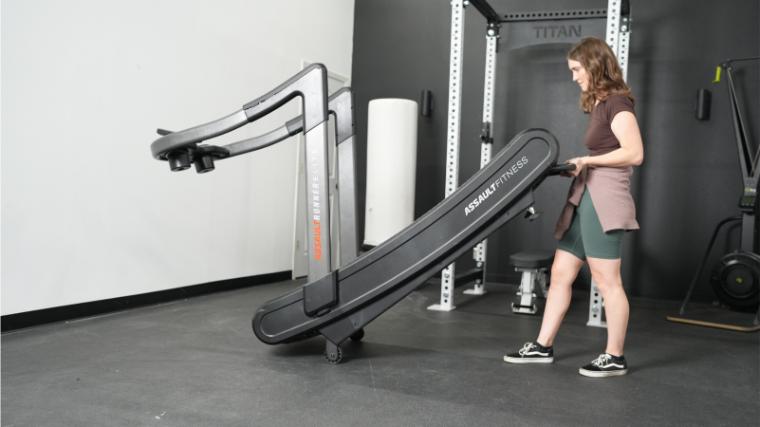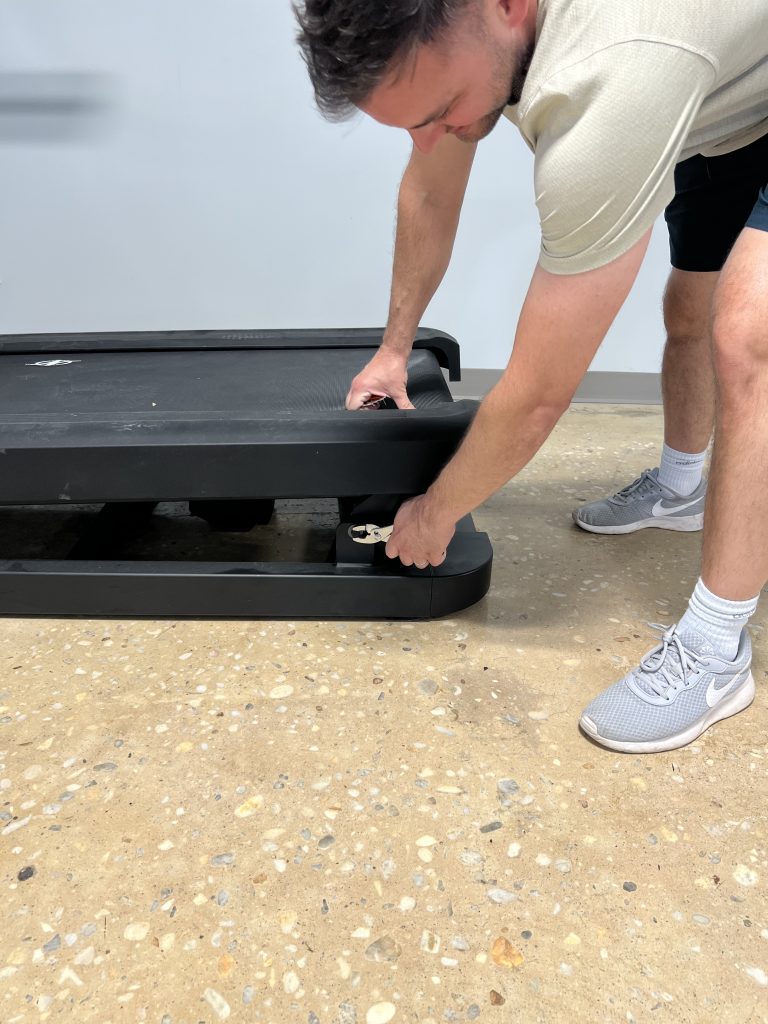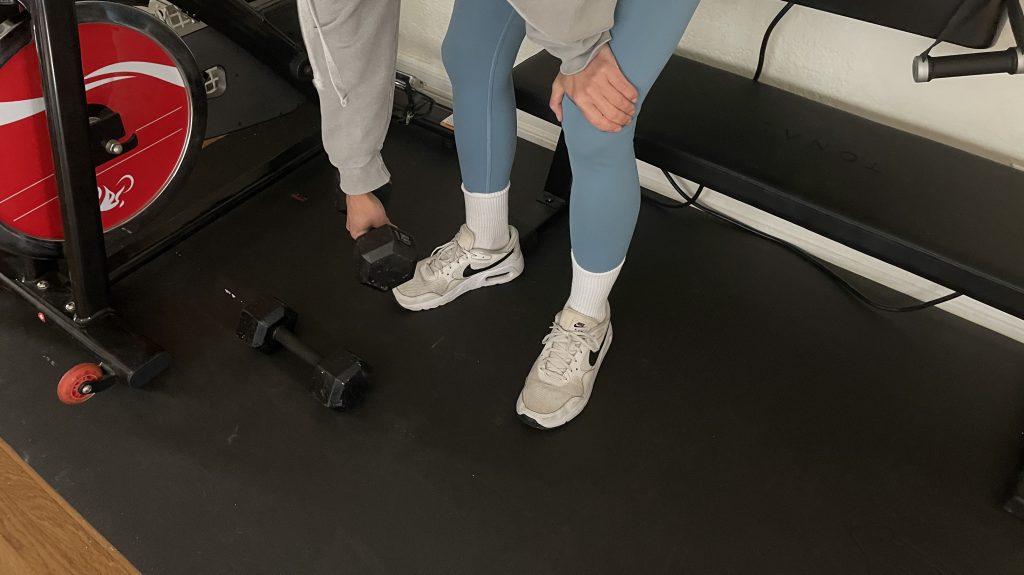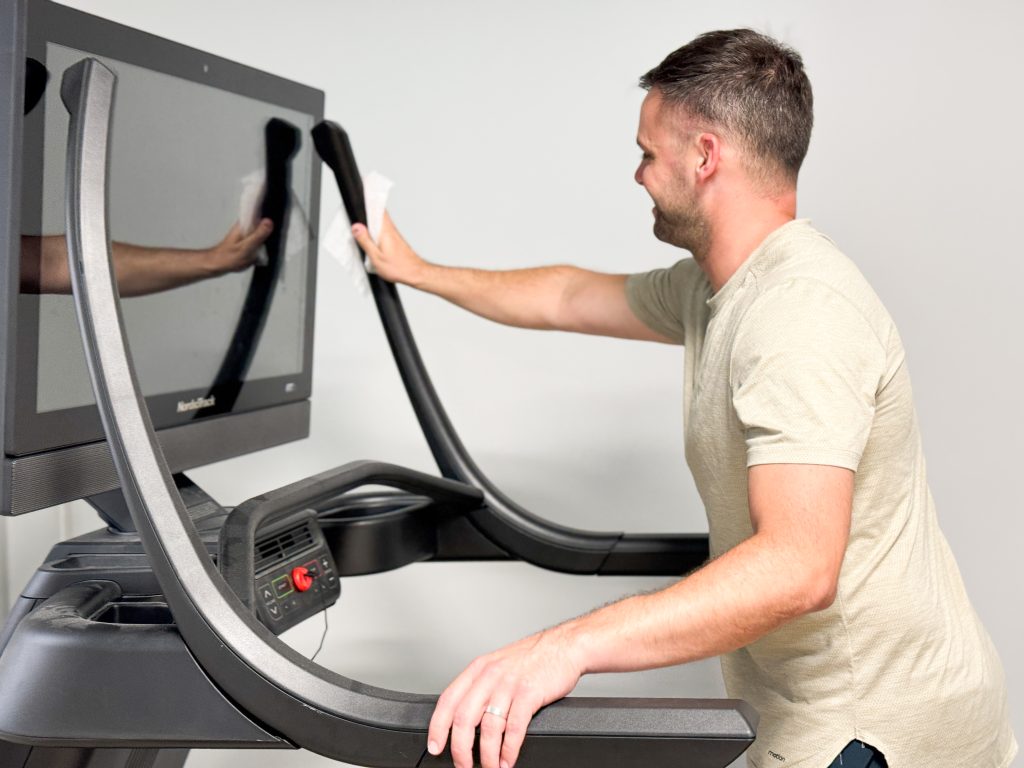Treadmill maintenance has roots dating back to the 1800s. Legend says that William Cubitt invented one of the earliest machines, setting the template for the best treadmills of today. Back then, however, treadmills weren’t for exercise. Rather, they were — and some might argue still are — used as a form of torture, particularly to provide human power for gear-operated grain mills and water pumps. (1)
Despite its checkered past, the treadmill remains a staple piece of exercise equipment, and, as our expert reviewer Amanda Capritto, CPT, CES, CNC, CF-L1, CSNC, notes, having one in your home “may encourage you to exercise more frequently, which is almost always a good thing.” Whether you’re a fan or not, taking care of this investment ensures it performs well over time. To ensure just that, here are some simple tips for treadmill maintenance to maintain your machine’s longevity.
How Often Should You Clean Your Treadmill?
If you want your treadmill to stick with you for the long haul, you’ll want to routinely wipe it down, tend to the belt’s alignment and lubrication, and monitor the performance of its electrical components. See the chart below for a loose timeline of when you should perform particular maintenance tasks.
| After Every Use | Weekly | Periodically |
| Wipe down/disinfect | Vacuum | Vacuum (home gym) (once a month) |
| Pay attention to strange noises or burning smells | Check for signs of wear | Apply lubricant (1-4 times per year) |
| Check cords and power supply | Clean and check alignment of walking belt | Vacuum motor component (once a month) |
Treadmill Maintenance Basics
Whether you’re doing preventative maintenance on a treadmill in a commercial gym or a DIY project at your home gym, a few basic tasks will protect you from costly repairs and increase the lifespan of your machine — no matter what type of treadmill it is.
Let’s break down the tasks that need to be performed periodically to keep your treadmill in tip-top shape.
- Lubrication
- Vacuuming
- Checking screws and belts
- Installing a treadmill mat
Lubrication
Even if you’re not one of those people who runs so fast on the treadmill that it looks like it might start on fire, lubrication is key in making sure the belts don’t become cracked and brittle from the friction of all of the moving parts.
How often you apply the belt lubricant will depend on how often you use the treadmill. A good rule of thumb is every 150 miles, but be sure to check the treadmill’s owner manual for specific instructions from the manufacturer.
You might be tempted to grab a can of WD-40, but don’t. It’s important to use the correct type of lubricant — silicone or Teflon — for your treadmill before self-lubricating. Applying the wrong lube can void your warranty and leave you with costly repairs on top of a broken treadmill. Check out our list of the best treadmill lubricants to find the right brand for you.
Vacuuming
Who knew the Hoover would come in handy in maintaining a treadmill?
Close your eyes and imagine all of the grime and dirt that gym shoes accumulate, and now imagine how many steps are taken with those dirty gym shoes on the treadmill — especially a gym treadmill with multiple users.
Just like floors need to be vacuumed, the treadmill deck and belt need to be vacuumed to remove the build-up caused by dirt, dust, hair, and grime. Besides keeping the equipment clean, no one likes seeing hairballs.

In addition to the treadmill deck and belt, raise your treadmill to the highest incline to vacuum underneath. (This can be made that much easier with one of the best folding treadmills). Clean the underside with vacuum attachments or a dry cloth for the places the attachment can’t reach.
Finally, you’ll need an Allen wrench or a screwdriver. Use it to remove the motor cover and clean around the treadmill motor. Be sure to unplug the unit and avoid touching the vacuum directly to the electronics.
It might seem tedious but vacuuming the treadmill deck, belt, and motor will get rid of the common build-up and hair that can potentially shorten your treadmill’s lifespan.
Checking Screws and Belts
Vibrations are good if you’re listening to the Beach Boys, but not so good if they’re coming from your treadmill.
A few quick checks can help keep the user safe and prevent an unnecessary treadmill repair:
- Tighten loose screws
- Check belt tension
- Look for signs of wear on the side of the belt
- Apply treadmill lubricant, if necessary
- Look for misalignment of the belt and refer to your owner’s manual to realign
Checking to make sure the treadmill’s screws are tightened will prevent rattling and provide a smoother, quieter experience, not to mention keep your treadmill held together properly. If you’re used to luxury models such as the NordicTrack Commercial 1250, you know that the key to a great workout is the smooth, sturdy performance they deliver. It makes exercising a breeze and much more enjoyable, so you’ll want to follow this step.

As such, one of the main culprits of treadmill repair is a damaged treadmill belt. The walking belt — aka the running belt — can take a beating with all of the steps it endures, so it’s important to keep an eye on the condition of it.
Turn your treadmill on a very low speed (with no one on it) and check the sides of the belt for wear and tear as it completes a full cycle. If the belt is maintained properly, most belts will last for several years. Maintaining the belt — proper alignment, tension, and lube — is the holy grail of your treadmill’s maintenance.
Installing a Treadmill Mat
This basic maintenance step is as easy as it sounds. Placing a durable treadmill mat under your exercise equipment will protect the floors and give the treadmill some cushioning, which will lessen the impact and reduce the noise.

A thin yoga mat won’t cut it, so make sure it’s something that can withstand the impact and weight. Installing the right mat will hopefully mean you only have to do this task once. We can help get you started with our list of the best home treadmill mats.
Maintenance After Each Workout
Now that we’ve reviewed the basics of treadmill maintenance, let’s talk about some steps that should be taken after each workout to prolong the life of your treadmill. They’re quick, easy, and can be completed every time you use your treadmill.
Clean
If you have a treadmill in your home gym, you have the sweet reassurance of knowing that your fitness equipment has been wiped down after a good cardio sweat sesh. If you’re working out at the gym — not so much.
Cleaning a treadmill is thankfully quick and easy. Grab a damp cloth or disinfectant wipe to clean the surfaces and handles from sweat, germs, and bacteria.

If you’re wiping down electronics or the screen, take a look at your user manual for safe ways to clean them.
Use Your Senses
Although this step might seem obvious, it’s worthy of a reminder. One of the best ways to perform preventative maintenance is to use your senses before, during, and after you hop on your treadmill.
- Check for a burning smell
- Listen for strange noises
- Look for signs of wear
- Check power cords
Final Word
The treadmill is arguably one of the most popular pieces of exercise equipment used today. (2) While the price for a treadmill has a very large range, even the best budget treadmills are worth maintaining.
If you own a home treadmill and haven’t followed these steps, maybe you’ve come here to determine whether you should fix it or replace it. If you’re in the market to buy a new piece of equipment, do your due diligence and check out how they rate in the competitive fitness equipment market—your future self will thank you. No matter what type of treadmill you’re maintaining, following these basic steps will protect your investment, provide a better workout, and keep the miles rolling on your never-ending sidewalk.
FAQs: Treadmill Maintenance
How often should I clean my treadmill?
How often you clean your treadmill will vary depending on what part of the treadmill you’re cleaning. A good wipe-down on high-touch parts is quick and easy and should be done after every use. Vacuuming the deck, belt, motor component, and underneath the treadmill will depend on how often it’s used.
What maintenance is required of a treadmill?
Cleaning, vacuuming, lubricating, checking for signs of wear, and checking for loose screws or a misaligned walking belt are all required maintenance to keep your treadmill in top condition.
How do you lubricate a treadmill?
Check your user manual for specific lubricant instructions and specifications, as each model may vary. If you don’t have access to your user manual, we’ve got a piece on how to lubricate your treadmill. Remember, just say “no” to WD-40.
References
- Kat Eschner. (2017). In the 19th Century, You Wouldn’t Want to Be Put on the Treadmill. Retrieved from https://www.smithsonianmag.com/smart-news/19th-century-you-wouldnt-want-be-put-treadmill-180964716/.
- Gregory A Brown, Chad M Cook, Ryan D Krueger, Kate A Heelan. (2010). Comparison of energy expenditure on a treadmill vs. an elliptical device at a self-selected exercise intensity. Retrieved from https://pubmed.ncbi.nlm.nih.gov/20453685/.